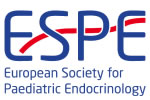hrp0086fc8.1 | Growth: Clinical | ESPE2016
Transcriptomics and Machine Learning Methods Accurately Predict Diagnosis and Severity of Childhood Growth Hormone Deficiency
Murray Philip , Stevens Adam , Koledova Ekaterina , Chatelain Pierre , Clayton Peter
hrp0086fc8.4 | Growth: Clinical | ESPE2016
Genetic Insights from Children with Idiopathic Short Stature in the EPIGROW Study
Perchard Reena , Murray Philip , Payton Anthony , Clayton Peter
hrp0086fc14.6 | Growth : Mechanisms | ESPE2016
In vitro and in vivo Evidence for a Growth Inhibitory Role of the Transcription Factor ZBTB38 Throughout Pre- and Post-Natal Life
Parsons Sam , Stevens Adam , Whatmore Andrew , Murray Philip , Clayton Peter
hrp0086rfc14.5 | Growth : Mechanisms | ESPE2016
Gene Expression Profiling of Children with GH Deficiency (GHD) Prior to Treatment with Recombinant Human Growth Hormone (r-hGH) is Associated with Growth Response Over Five Years of Therapy
Stevens Adam , Murray Philip , Koledova Ekaterina , Chatelain Pierre , Clayton Peter
hrp0082fc7.3 | Growth promoting therapies | ESPE2014
Gene Expression Networks Associated with Changes in Serum Markers of Metabolism and Growth in GH-Treated Children with GH Deficiency
Stevens Adam , De Leonibus Chiara , Chatelain Pierre , Clayton Peter
hrp0095fc10.2 | GH and IGFs | ESPE2022
The first-year growth response to once-weekly growth hormone (GH) treatment can be predicted from the pre-treatment blood transcriptome in children with GH deficiency (GHD)
Garner Terence , Clayton Peter , Murray Philip , Bagci Ekaterine , Højby Michael , Stevens Adam
hrp0095p2-129 | Fetal, Neonatal Endocrinology and Metabolism | ESPE2022
Molecular pathways linking fetal growth restriction to cardiometabolic risk in childhood
Perchard Reena , Higgins Lucy , Garner Terence , Stevens Adam , Johnstone Edward , Clayton Peter
hrp0092fc12.4 | Growth and Syndromes (to include Turner Syndrome) | ESPE2019
Integration of Transcriptomic and Epigenomic Data in Childhood Identifies a Subset of Individuals Born Small for Gestational Age (SGA) with "catch-up" Growth Who Become Pre-Hypertensive in Early Adulthood
Garner Terence , Murray Philip , Sellers Robert , Whatmore Andrew , Clayton Peter , Stevens Adam
hrp0092fc12.6 | Growth and Syndromes (to include Turner Syndrome) | ESPE2019
An Integrated Systems Biology Analysis of the Genome, Epigenome and Transcriptome Identifies a Distinct Pattern of Hypermethylation Associated with Low Childhood Growth
Garner Terence , Sellers Robert , Guo Hui , Whatmore Andrew , Clayton Peter , Stevens Adam , Murray Philip
hrp0089fc15.1 | Growth and Syndromes | ESPE2018
The Diagnostic Yield of a Targeted Next Generation Sequencing Panel in Children with Short Stature of Undefined Aetiology
Perchard Reena , Murray Philip G , Highton Georgina L , Whatmore Andrew J , Clayton Peter E



